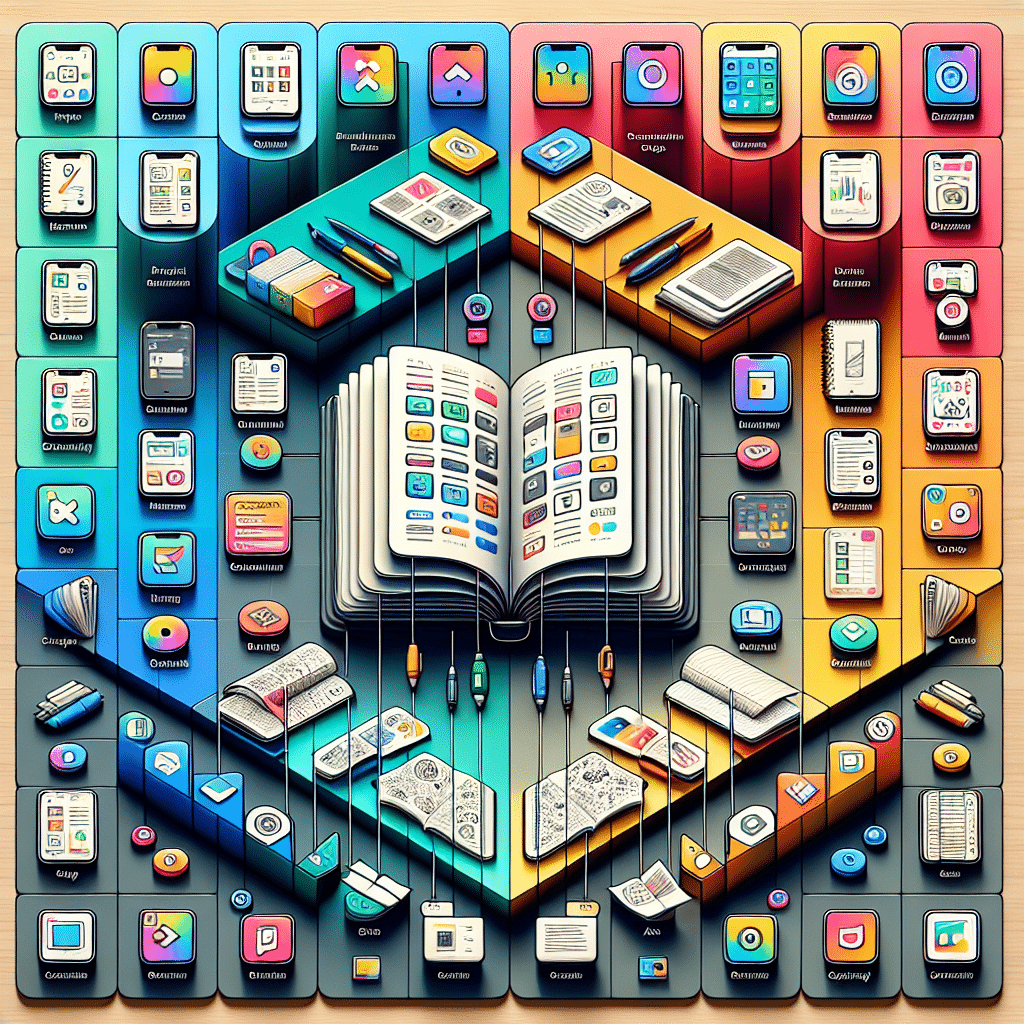Smart Notebook Apps Comparison: A Comprehensive Look
1. Key Features to Consider
When selecting a smart notebook app, several critical features should be evaluated:
-
User Interface (UI): A clean, intuitive UI enhances user experience. Complex navigations can lead to frustration.
-
Organization: The best apps provide robust tools for categorizing notes, such as notebooks, tags, or folders.
-
Search Functionality: Optical Character Recognition (OCR) enables users to search handwritten notes, increasing accessibility.
-
Collaboration Tools: Many smart notebook apps support real-time collaboration, essential for teams and study groups.
-
Multimedia Integration: The capability to include images, videos, and audio notes can enrich your notes and make them more engaging.
-
Cross-Platform Syncing: Ideally, your app should sync across devices, allowing you to access your notes anywhere.
-
Export Options: Check if the app allows exporting to various formats (PDF, Word, etc.) for easy sharing or archiving.
2. Top Smart Notebook Apps
2.1. Evernote
Overview: Evernote is a versatile note-taking app with robust organizational features.
Pros:
- Powerful Search: Its advanced search capabilities allow for easy retrieval of notes, including OCR for handwritten content.
- Web Clipper: Allows users to save web pages directly into their notebooks.
- Multi-Platform Support: Available on iOS, Android, Windows, and Mac.
Cons:
- Storage Limitations: Free version has limited monthly upload quota.
- Learning Curve: New users may find initial navigation challenging.
Best For: Users looking for a comprehensive organizing tool that integrates web content.
2.2. Notability
Overview: Popular among student users, Notability excels in handwriting and audio note capability.
Pros:
- Handwriting Recognition: Users can take handwritten notes with available conversion to typed text.
- Audio Syncing: Record lectures while taking notes, allowing for playback.
- Simple UI: Easy to navigate with minimal distractions.
Cons:
- Limited Collaboration: Less effective for team projects compared to other apps.
- iOS Only: Currently exclusive to Apple devices, limiting its user base.
Best For: Students or professionals who prefer handwritten notes with the ability to integrate audio.
2.3. Microsoft OneNote
Overview: OneNote is part of Microsoft Office and offers a free-form canvas for organizing notes.
Pros:
- Flexible Layout: Users can arrange content freely, including text, images, and drawings.
- Integration with Microsoft Ecosystem: Seamless compatibility with other Office apps.
- Real-Time Collaboration: Multiple users can work on notes simultaneously.
Cons:
- Inconsistent Syncing: Some users report issues with sync reliability across devices.
- Cluttered UI: It can appear overwhelming with many options and tools.
Best For: Those already within the Microsoft ecosystem and who need a flexible note-taking solution.
2.4. Google Keep
Overview: Google Keep focuses on simplicity, offering quick note-taking and organization.
Pros:
- Easy to Use: User-friendly interface allows for quick note-taking.
- Color-coded Notes: Organizing notes visually by color helps with workflow.
- Integration with Google Services: Works well with Google’s suite of tools.
Cons:
- Limited Features: Not suitable for extensive note-taking or advanced organization.
- No Offline Access: Requires an internet connection for full functionality.
Best For: Users who need a simple, fast way to jot down quick notes or reminders.
2.5. GoodNotes
Overview: This app is designed specifically for those who enjoy handwriting.
Pros:
- Exceptional Handwriting Features: Provides advanced tools for note-taking, with features for various paper templates.
- Organization with Folders: Easily organizes notes into notebooks and folders.
- PDF Annotation: Users can annotate PDFs directly within the app.
Cons:
- iOS Exclusive: Only available on iPad and iPhone, limiting its audience.
- Costly: One-time purchase fee can deter potential users.
Best For: Students or professionals who prefer taking handwritten notes and require robust PDF handling.
3. Comparison Chart
| Feature | Evernote | Notability | OneNote | Google Keep | GoodNotes |
|---|---|---|---|---|---|
| Handwriting Support | Yes | Yes | Yes | No | Yes |
| Multimedia Integration | Yes | Limited | Yes | No | Yes |
| Collaboration | Yes | Limited | Yes | Yes | No |
| Cross-Platform Sync | Yes | No | Yes | Yes | No |
| Free Version Available | Yes | Yes | Yes | Yes | No |
| PDF Export | Yes | Limited | Yes | No | Yes |
4. Consideration for Students vs. Professionals
- Students may benefit more from Notability for its audio features and GoodNotes for handwriting. In contrast, professionals might lean toward Microsoft OneNote or Evernote for their robust organizational capabilities and integration with other productivity tools.
5. Final Thoughts
Choosing the right smart notebook app depends on individual needs and preferences. Whether prioritizing handwriting, multimedia integration, or organization, evaluating key features alongside user reviews will guide you toward the perfect solution for optimal productivity.
